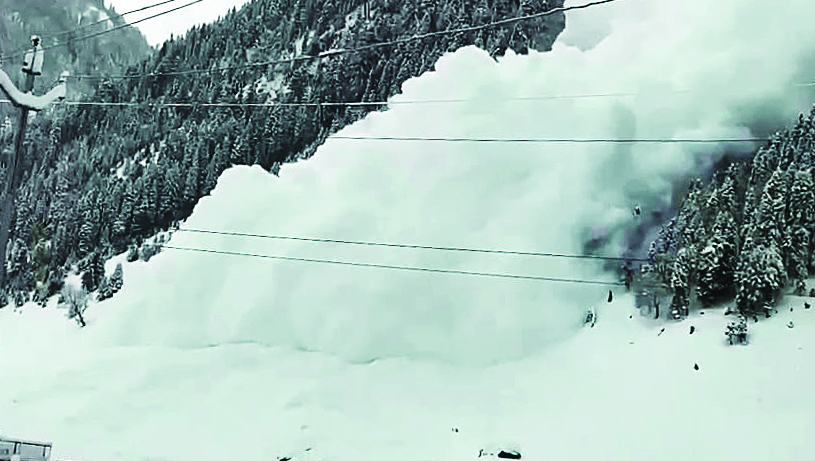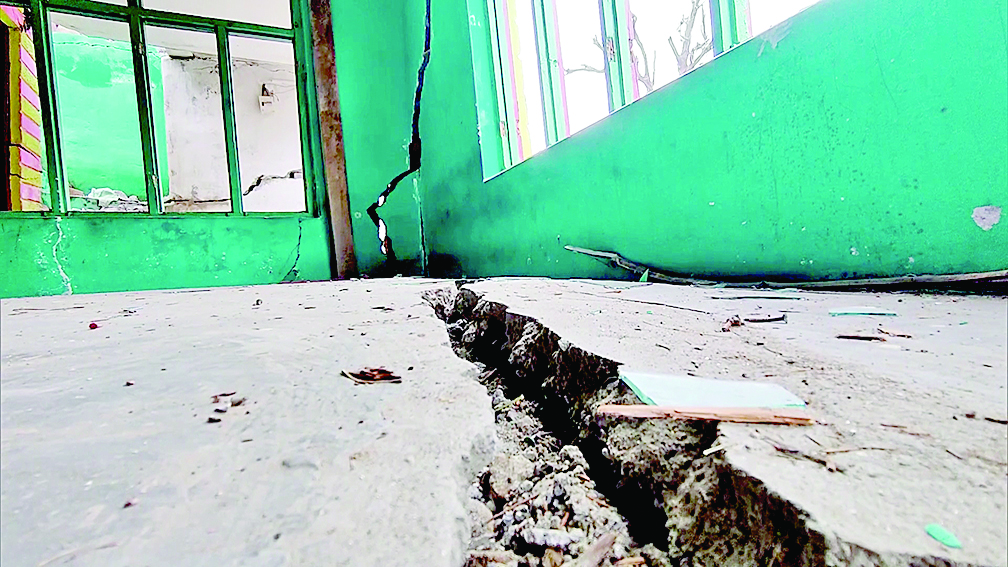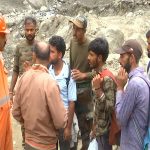Srinagar, Feb 05: As Kashmir witnessed multiple snow avalanches during this winter, environmental experts attribute the frequent occurrence of avalanches to global warming and climate change in the Himalayan region.
Experts said that environmental degradation and the rise of temperatures due to global warming have largely impacted glaciers and ice caps, which was causing snow avalanches and other natural disasters.
Pertinent to mention, Four days ago, two Polish skiers were killed and 19 others were rescued following an avalanche in the Ski resort of Gulmarg in north Kashmir. It was followed by three avalanches in Gurez sector.
Senior earth scientist and environmental expert, Prof Shakil Ahmad Romshoo told Rising Kashmir that climate change is evident in Valley. He said over the past two decades there has been an increase in global temperatures and there was authentic data available to support it.
“Usually during the Chillai-Kalan (Coldest part of winter) in Kashmir, most areas would witness subzero temperatures. Due to that there were less chances of avalanches. Traditionally we used to witness more snowfall and low rain during Chillai-Kalan but now the weather conditions are totally opposite of it,” Prof. Romshoo said.
Prof. Romshoo, who is presently Vice Chancellor of the Islamic University of Science and Technology Awantipora said that there are clues all over the world that avalanche patterns are changing on our warming planet and the same changes are being witnessed in Kashmir valley.
“There is a sudden increase in temperatures due to global warming and that prompts melting in snow avalanche areas. When melting occurs, the interface between the mountain surface and snow gets less friction. After that it starts sliding quickly,” he said.
Prof. Romshoo said that avalanches are rapid downward flows of big masses of snow over a steep slope, and happen in mountain regions all over the world. It can break away from adjacent and underlying areas of snow, sliding on layers of ice.
“In the past, snow avalanches used to occur in March or ending February due to an increase in day temperatures in Kashmir but now the region is witnessing global warming and it is impacting drastically,” he said.
Prof. Romshoo said over a period of time reporting of avalanches has definitely increased in recent years due to the upgradation of communication facilities in the far-off areas prone to avalanches.
He said the records related to avalanches are maintained by Snow and Avalanche Study Establishment (SASE), Chandigarh and they are not sharing their data in the public domain.
“We don’t have any official data that would indicate that the frequency of avalanches has increased in the Kashmir valley or elsewhere in the Himalayan region,” he said.
This year, back-to-back snow avalanches hit higher reaches of Kashmir during January and the first week of February, especially after fresh snowfall.
Director MeT Sonam Lotus said snow avalanches are caused when there is heavy snowfall in higher reaches. In the past snow avalanches have been recorded in parts of Kashmir.
“To predict avalanches, there is a separate department for that and they issue advisory in advance,” he said.
Dr. Irfan Rashid, who is Assistant Professor at the Department of Geoinformatics, University of Kashmir said there is need for an efficient forecasting system to predict snow avalanches and overcome causalities like in other countries.
“Snow avalanches have some connection with climate change. We did not have specific historical or credible data regarding these avalanches. These might occur also due to climatic change,” he said.
Another KU Professor, who is an environment expert, said the increasing popularity of outdoor winter activities has led to increased numbers of accidents. Mountain snow cover is affected by climate change with increasing air temperatures and changes in precipitation, he said.
“We see that in developed parts of the world, development can outpace avalanche research and mitigation efforts. Recently this winter many avalanches occurred in Kashmir parts that resulted in several casualties,” he said.
He said climatic change is responsible for this and if we allow mining, deforestation and cut down mountains, then these changes can become a threat to lives.
In Jammu and Kashmir, the Department of Disaster Management is issuing snow avalanches warnings. They also advise people to not to venture outside in these areas but still 5 persons have been killed due avalanches this winter in Valley.
Nazim Zia Khan, Secretary to Government, Department of Disaster Management did not respond to repeated calls from this reporter.
On Feb 3, two villages of GurezBandipora were hit by avalanches, blocking the river Kishanganga while another avalanche that hit earlier damaged the water supply in the region.
On January 29, a woman and a teenage girl were killed in an avalanche in Kargil district of Ladakh. On January 13, two non-local workers were killed in an avalanche in Sonamarg area of Ganderbal district in central Kashmir.
In Nov, 2022, three soldiers were killed after an avalanche hit the Army post in north Kashmir’s Kupwara district. Police said that three personnel of 56 Rashtriya Rifles (RR) died as the avalanche hit the Almorah post of Machil sector in Kupwara.









